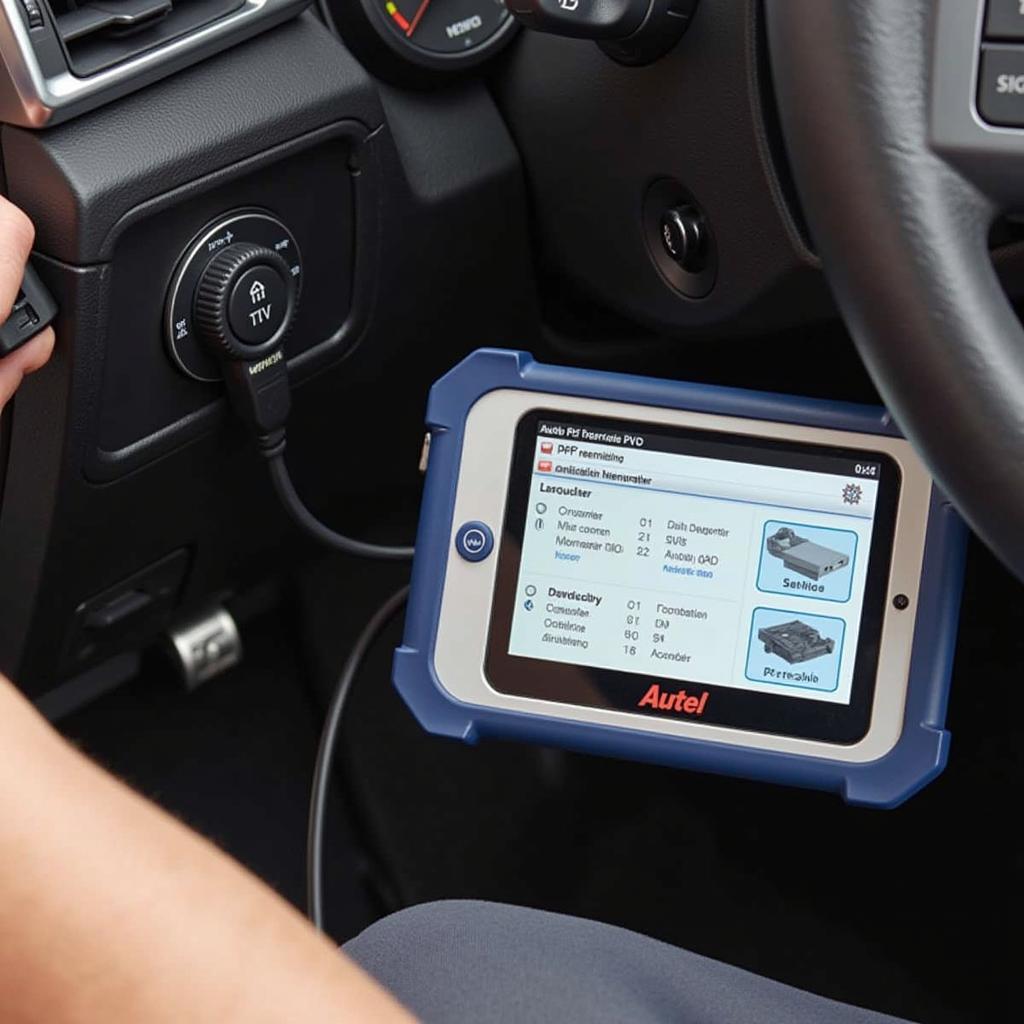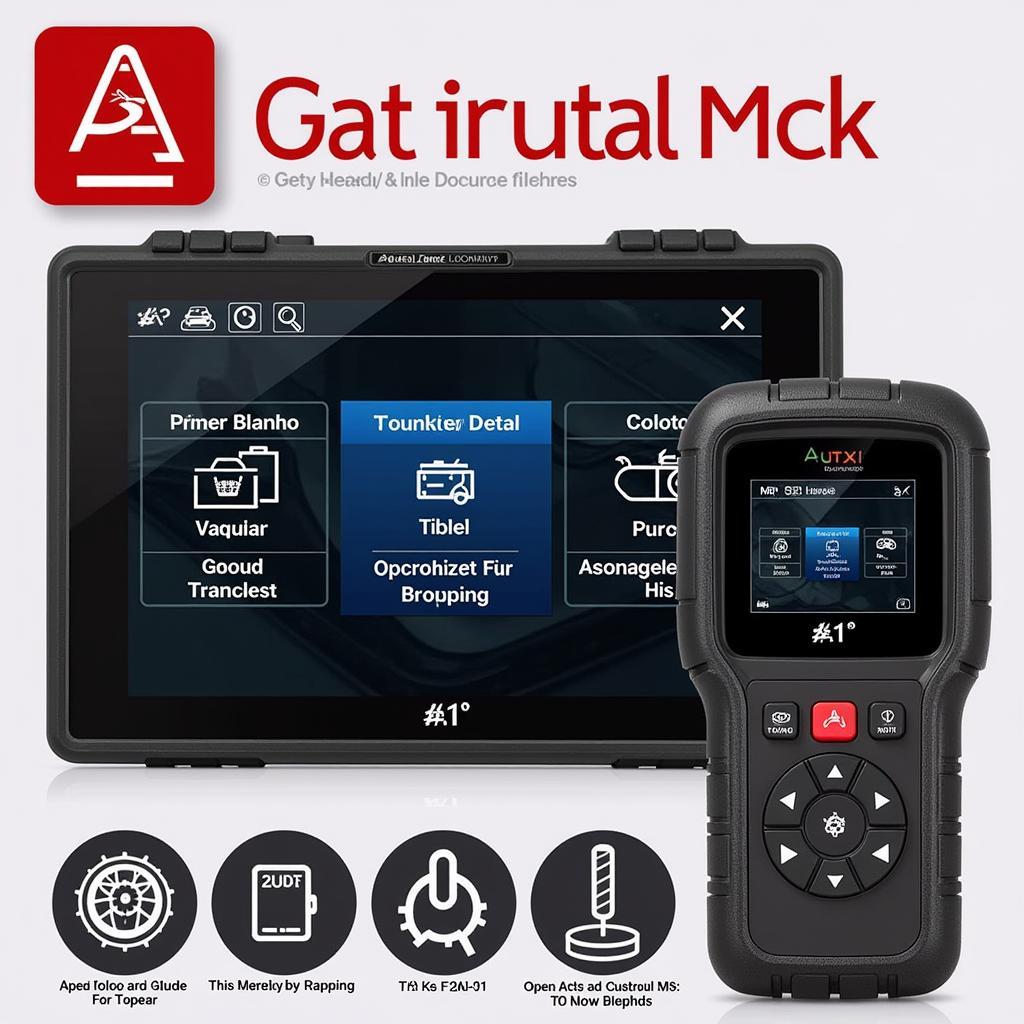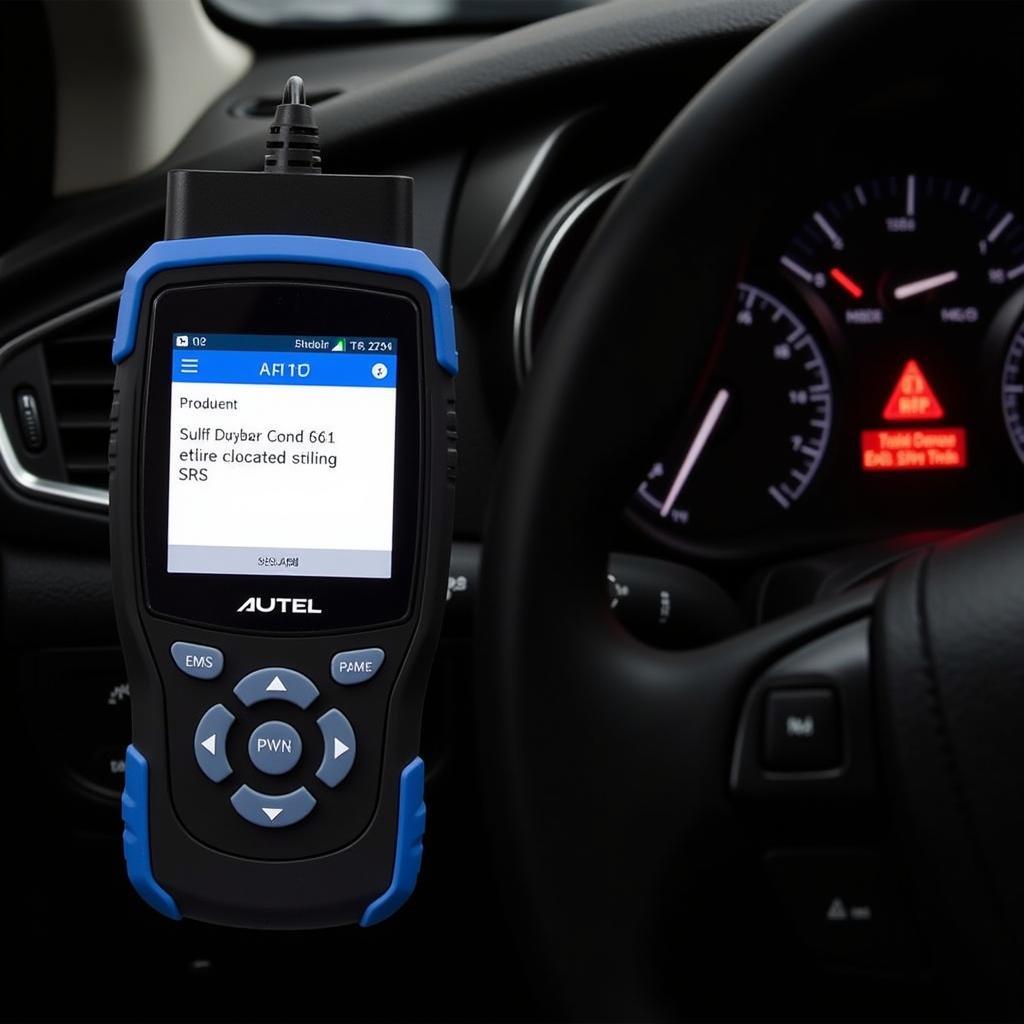DPF regeneration is a crucial maintenance procedure for diesel vehicles, and Autel MaxiSys scan tools offer a convenient and efficient way to perform this task. Whether you’re a seasoned technician or just starting out, understanding DPF regeneration with Autel MaxiSys is essential for maintaining optimal engine performance and minimizing emissions. This guide will delve into the process, benefits, and intricacies of using Autel MaxiSys to facilitate DPF regeneration.
What is DPF Regeneration?
DPF regeneration, short for Diesel Particulate Filter regeneration, is a process that cleanses the Diesel Particulate Filter (DPF) of soot and ash buildup. This filter traps harmful particulate matter emitted from the diesel engine, but over time, it can become clogged. Regeneration involves burning off this accumulated soot, restoring the filter’s efficiency and preventing engine performance issues.
Why is DPF Regeneration Important?
Regular DPF regeneration is vital for several reasons:
- Improved Engine Performance: A clogged DPF restricts exhaust flow, leading to reduced engine power and fuel efficiency.
- Reduced Emissions: Proper DPF regeneration minimizes the release of harmful particulate matter into the environment, contributing to cleaner air.
- Extended DPF Lifespan: Regular regeneration prevents premature DPF failure, saving you costly replacement costs.
How Does DPF Regeneration Work?
DPF regeneration can occur passively or actively:
- Passive Regeneration: This process happens naturally during normal driving conditions. High engine temperatures and exhaust gas flow create enough heat to burn off the soot in the DPF.
- Active Regeneration: This controlled process is initiated by the vehicle’s control unit and involves injecting additional fuel into the exhaust system. The extra fuel burns, creating higher temperatures and effectively cleaning the DPF.
Understanding Autel MaxiSys for DPF Regeneration
Autel MaxiSys scan tools are sophisticated diagnostic devices that offer various features for DPF regeneration:
- DPF Status Monitoring: Autel MaxiSys provides real-time information about the DPF’s condition, including soot loading, pressure differential, and regeneration status.
- Forced Regeneration: You can use Autel MaxiSys to initiate a forced DPF regeneration, manually triggering the cleaning process.
- DPF Diagnostics: Autel MaxiSys helps diagnose any DPF-related issues, identifying potential problems that require further investigation.
How to Perform DPF Regeneration with Autel MaxiSys
The process of performing DPF regeneration with Autel MaxiSys is straightforward:
- Connect Autel MaxiSys: Connect the Autel MaxiSys scan tool to the vehicle’s diagnostic port.
- Select Vehicle: Choose the correct vehicle make and model from the Autel MaxiSys database.
- Access DPF Functions: Navigate to the DPF regeneration function within the Autel MaxiSys menu.
- Initiate Regeneration: Follow the prompts provided by Autel MaxiSys to initiate the forced regeneration process.
- Monitor Progress: Observe the DPF regeneration progress displayed on the Autel MaxiSys screen.
- Complete Regeneration: Once the regeneration is complete, the Autel MaxiSys will indicate its completion.
What to Consider Before Performing DPF Regeneration
Before initiating a forced DPF regeneration, it’s crucial to consider the following:
- Vehicle Condition: Ensure the vehicle is in a safe and suitable location, with enough space for the regeneration process.
- Fuel Level: Have sufficient fuel in the tank to support the regeneration process.
- Engine Temperature: The engine should be operating at normal temperature to facilitate effective regeneration.
- DPF Status: Verify the DPF’s condition and ensure it’s not severely clogged. If the DPF is heavily loaded with soot, forcing regeneration might not be effective.
Common DPF Regeneration Issues and Troubleshooting
Despite the benefits, DPF regeneration can sometimes encounter issues:
- Failed Regeneration: The regeneration process may not complete successfully due to various factors, such as a clogged DPF, insufficient fuel, or a malfunctioning exhaust system.
- Excessive Regeneration Attempts: Frequent DPF regeneration attempts may indicate a deeper issue, like a faulty sensor or a leak in the exhaust system.
Here’s how to troubleshoot common DPF regeneration problems:
- Check Fuel Level: Ensure sufficient fuel is available for the regeneration process.
- Inspect DPF Status: Verify the DPF’s condition to determine if it needs replacement.
- Examine Exhaust System: Inspect for leaks and blockage in the exhaust system.
- Check Sensors: Ensure the relevant sensors are functioning correctly.
Frequently Asked Questions (FAQs)
1. How often should I perform DPF regeneration?
The frequency of DPF regeneration depends on your driving habits and the vehicle’s condition. Passive regeneration usually occurs automatically, but forced regeneration may be required periodically to maintain optimal performance. Consult your vehicle owner’s manual for specific recommendations.
2. Can I use Autel MaxiSys to perform DPF regeneration on any vehicle?
Autel MaxiSys supports a wide range of vehicle makes and models, but compatibility can vary. Check the Autel MaxiSys database to confirm if your vehicle is supported.
3. How long does DPF regeneration take?
The duration of DPF regeneration varies depending on the vehicle and its condition. Generally, it can take anywhere from 10 to 30 minutes.
4. What are the signs of a clogged DPF?
Common signs of a clogged DPF include reduced engine power, increased fuel consumption, and exhaust smoke.
5. Is it safe to perform DPF regeneration on my own?
While DPF regeneration is generally safe, it’s essential to have a basic understanding of the process and vehicle diagnostics. If you’re unsure, consult a qualified technician.
 Autel MaxiSys scan tool used for DPF regeneration
Autel MaxiSys scan tool used for DPF regeneration
Conclusion
Understanding DPF regeneration is crucial for maintaining diesel engine performance and minimizing emissions. Autel MaxiSys scan tools provide a convenient and effective way to perform both passive and active regeneration, offering crucial insights into the DPF’s condition. By utilizing these tools and following proper procedures, you can ensure optimal engine performance and prolong the life of your vehicle’s DPF system.
If you require any assistance or have further questions, don’t hesitate to contact our team. We are available 24/7 to provide expert guidance and support.
Contact Us:
WhatsApp: +1(641)206-8880
Email: [email protected]
Address: 276 Reock St, City of Orange, NJ 07050, United States.


